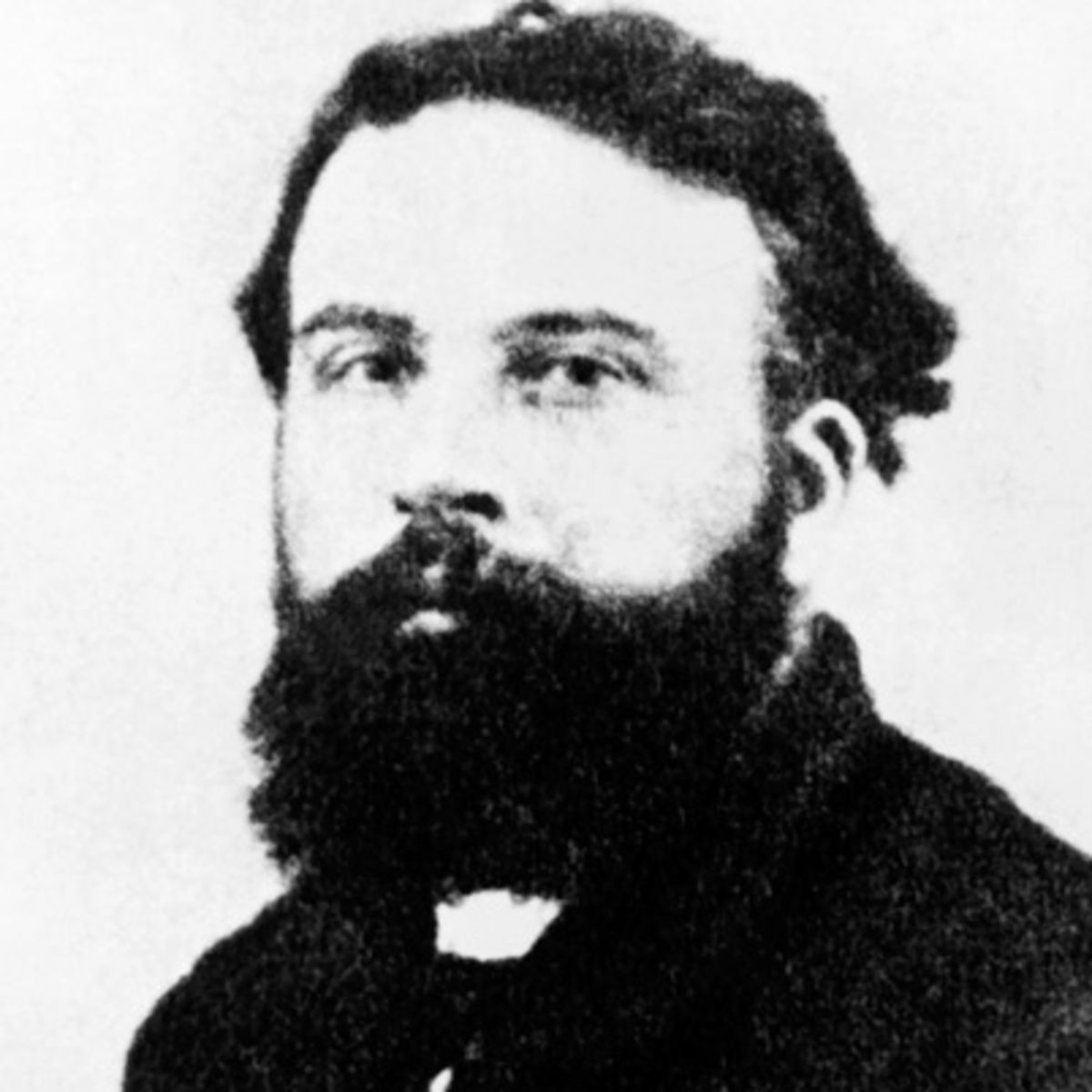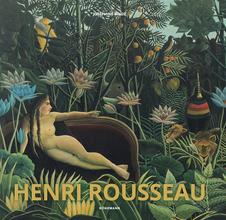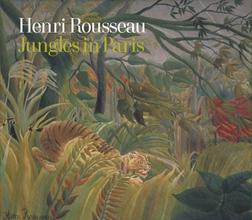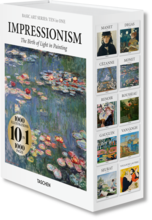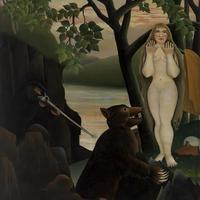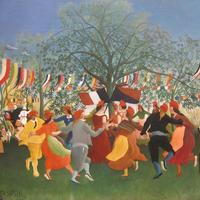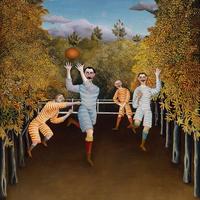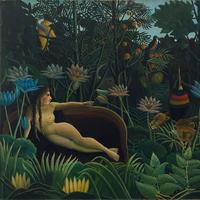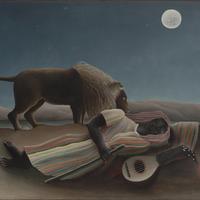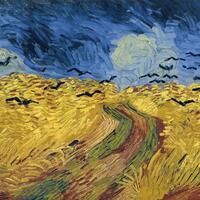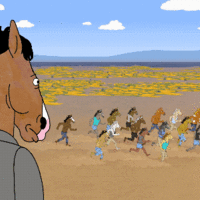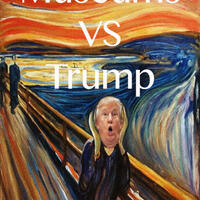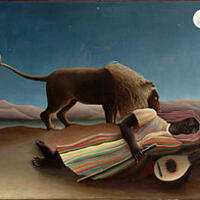More about Henri Rousseau
- All
- Info
- Shop

Sr. Contributor
Rumor has it Picasso bought one of Rousseau's paintings on the street in Paris just to reuse the canvas...
...but was so wowed that he instantly recognized the older Frenchman as his proto-modern superior. While it's true that Picasso was a huge Rousseau fan, that story's a fantasy. True, Picasso threw a fancy pants dinner party in Rousseau's honor and even personally donated a couple choice cuts by the self-taught artist to the Louvre. In short, each was a fan and friend of the other. It's just more likely the two had a mundane meet cute. Rousseau, after all, was far from an anonymous member of the Parisian arts scene. For the longest time, he was its biggest joke.
Rousseau painted in his spare time between holding down a day job as a tax collector at a city toll and being a loving husband and father. The less than riveting average itinerary of toll life is thought to be what got Henri interested in art, the theory being that painting was a way to whittle down the hours to quittin' time. As his work went next level and was accepted in semi-pro exhibitions, critics took notice. And totally panned him. They claimed he painted blindfolded or, worse, with his feet. One critic figured the only painting on display that was more terrible than Rousseau's at one particular exhibition was van Gogh's Starry Night. Obviously, critics are idiots.
Painting became an obsession for the self-trained artist as tragedy struck his family over and again. With illness and misfortune taking his wife, then almost all his kids. His only surviving daughter was sent to live with relatives and Rousseau filled the void in his heart with art. He quit his job at the age of 49 to devote everything to painting. Rousseau's career moved beyond critical derision into something unique, forming the archetype of the "naive" artist. That's an in-crowd way of saying Rousseau didn't have the formal training of the artists we usually describe as brilliant or genius. Surrealists and post-impressionists in particular fell in love with his rogue style that focused on imaginative tropical vistas. By this measure, Rousseau could be thought of as a big, fat failure considering that all he ever strived for was to paint like the old school masters.
His jungle painting caused a lot of confusion for viewers. Most thought Rousseau was some kind of Indiana Jones-type adventurer, sporting paintbrushes and a palate in place of a whip. Henri, for his part, was happy to let people think as they pleased. In reality, he never left France. Some inspiration came from his time in the military, listening to his comrades spew out barracks gossip about their service in Mexico supporting Emperor Maximilian. Otherwise, he augmented memories of other soldiers' tales with visits to Paris' Jardin des Plantes (a kick ass botanical garden and zoo) and whatever he saw in books.
Featured Content
Here is what Wikipedia says about Henri Rousseau
Henri Julien Félix Rousseau (
French: [ɑ̃ʁi ʒyljɛ̃ feliks ʁuso]; 21 May 1844 – 2 September 1910) was a French post-impressionist painter in the Naïve or Primitive manner. He was also known as Le Douanier (the customs officer), a humorous description of his occupation as a toll and tax collector. He started painting seriously in his early forties; by age 49, he retired from his job to work on his art full-time.
Ridiculed during his lifetime by critics, he came to be recognized as a self-taught genius whose works are of high artistic quality. Rousseau's work exerted an extensive influence on several generations of avant-garde artists.
Check out the full Wikipedia article about Henri Rousseau

